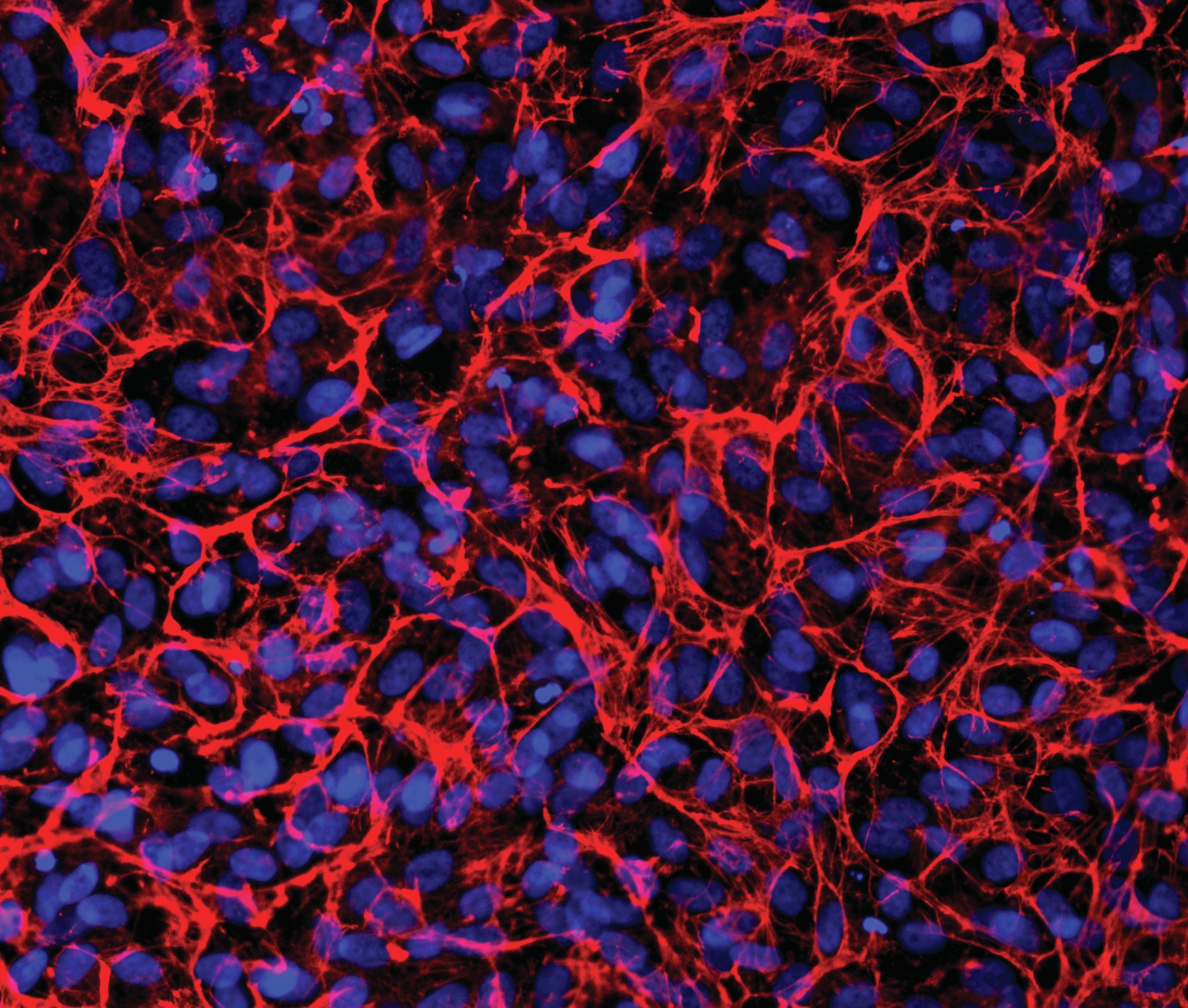
The tissues in our bodies are not just made up of cells. A large contribution is made by a complex mixture of macromolecules outside the cells, which form the extracellular matrix. The roles of this elaborate covering include controlling cell shape, binding the cells together and providing structural support. One important constituent of the matrix is fibronectin — the red network seen in the image. Fibronectin is a large glycoprotein that we can see in images like this thanks to the technique of immunofluorescence. This technique uses the specific binding of antibodies to antigens to allow researchers to bind fluorescent dyes to particular target molecules.
A good way to study the extracellular matrix is using cells from tissues that are grown in the laboratory. The cells in the image shown here were human eye retina epithelial cells, grown on cover slips in a liquid culture medium. The cover slips bearing the cells were incubated with a fluorescent antibody specific to fibronectin and then transferred onto microscope slides using a mounting medium, which preserves the cells and prevents loss of fluorescence during microscopic examination. The microscope illuminated the sample with light of the wavelength that caused the dye to fluoresce, producing the two-dimensional image shown here.
Your organisation does not have access to this article.
Sign up today to give your students the edge they need to achieve their best grades with subject expertise
Subscribe




